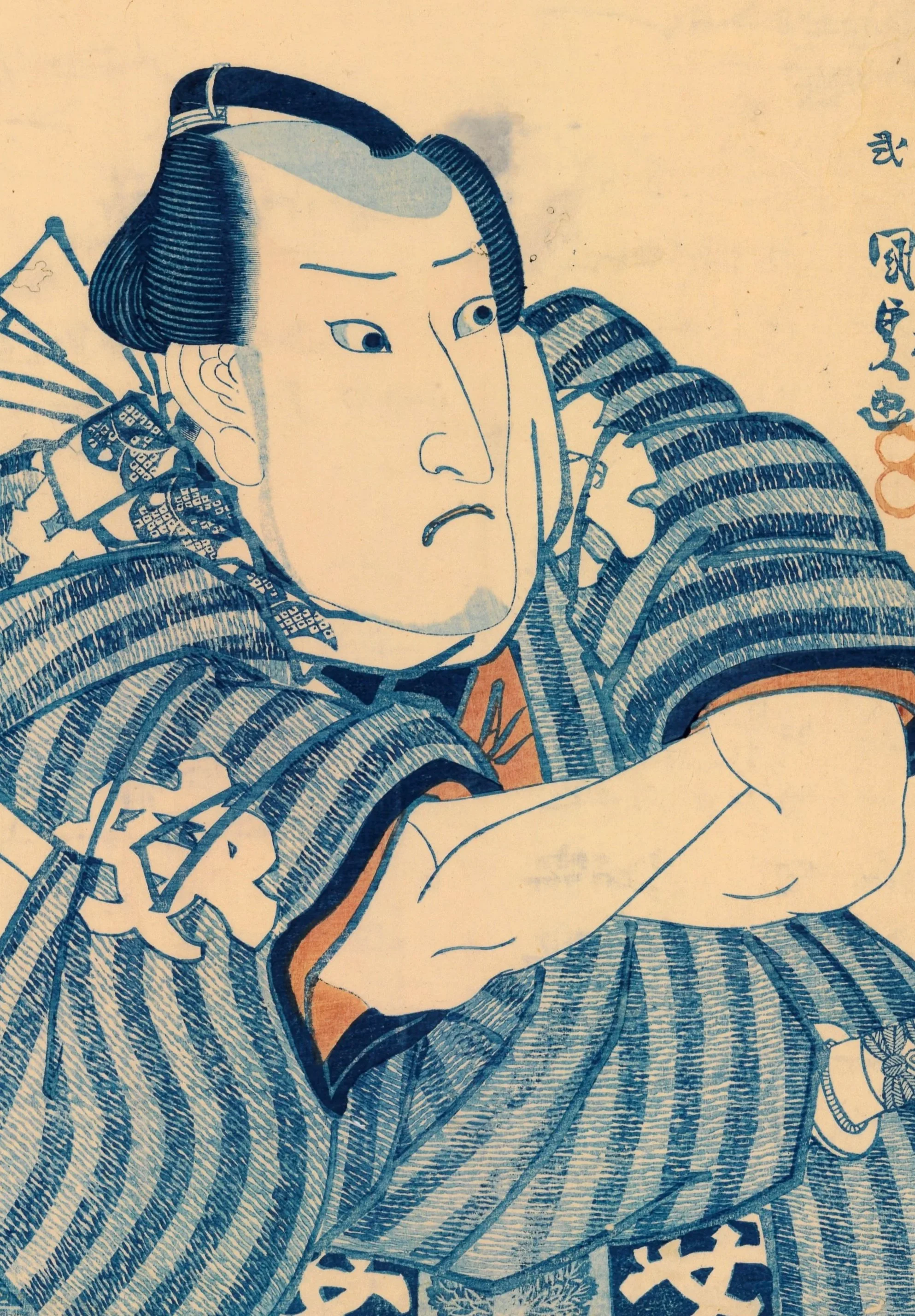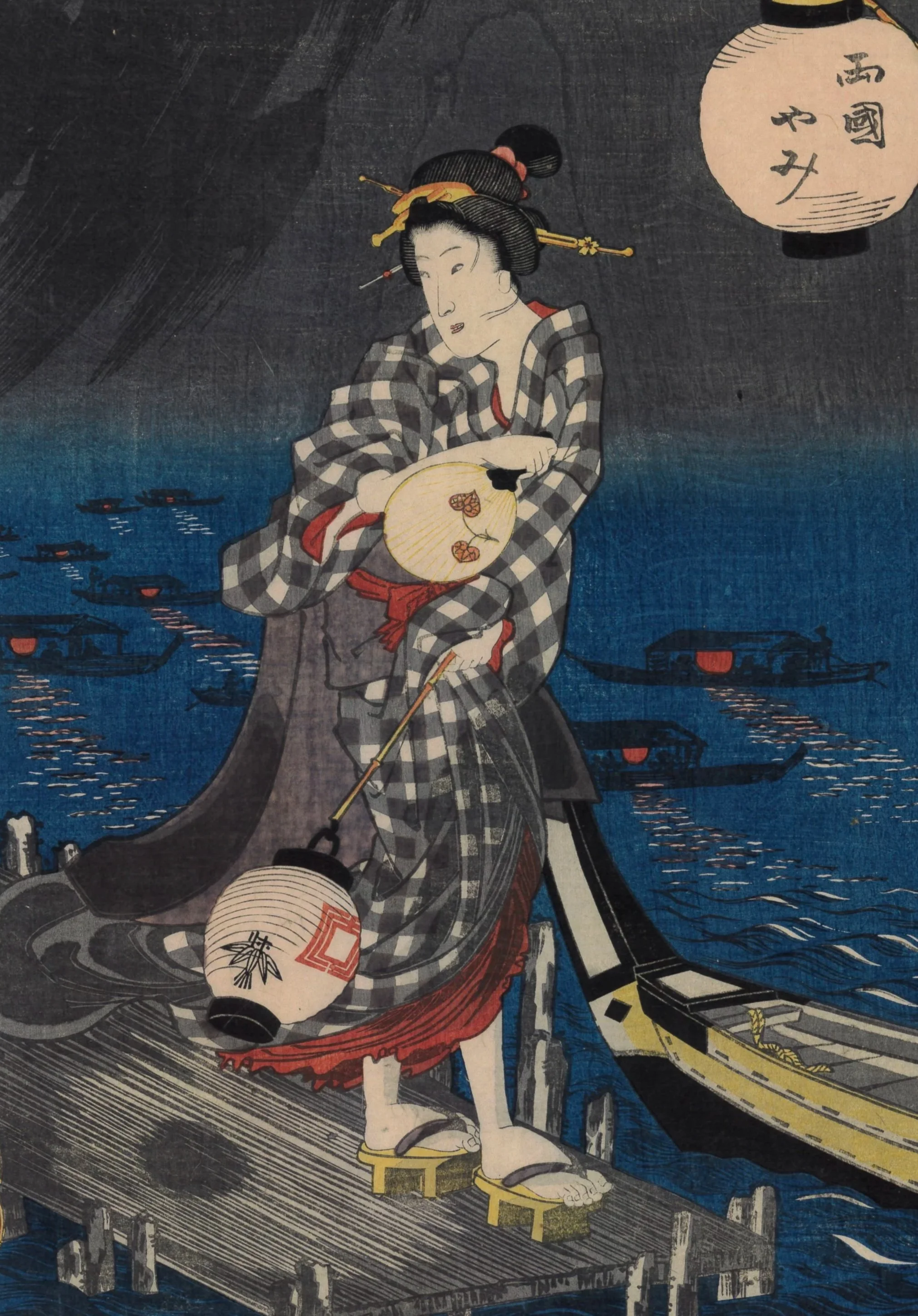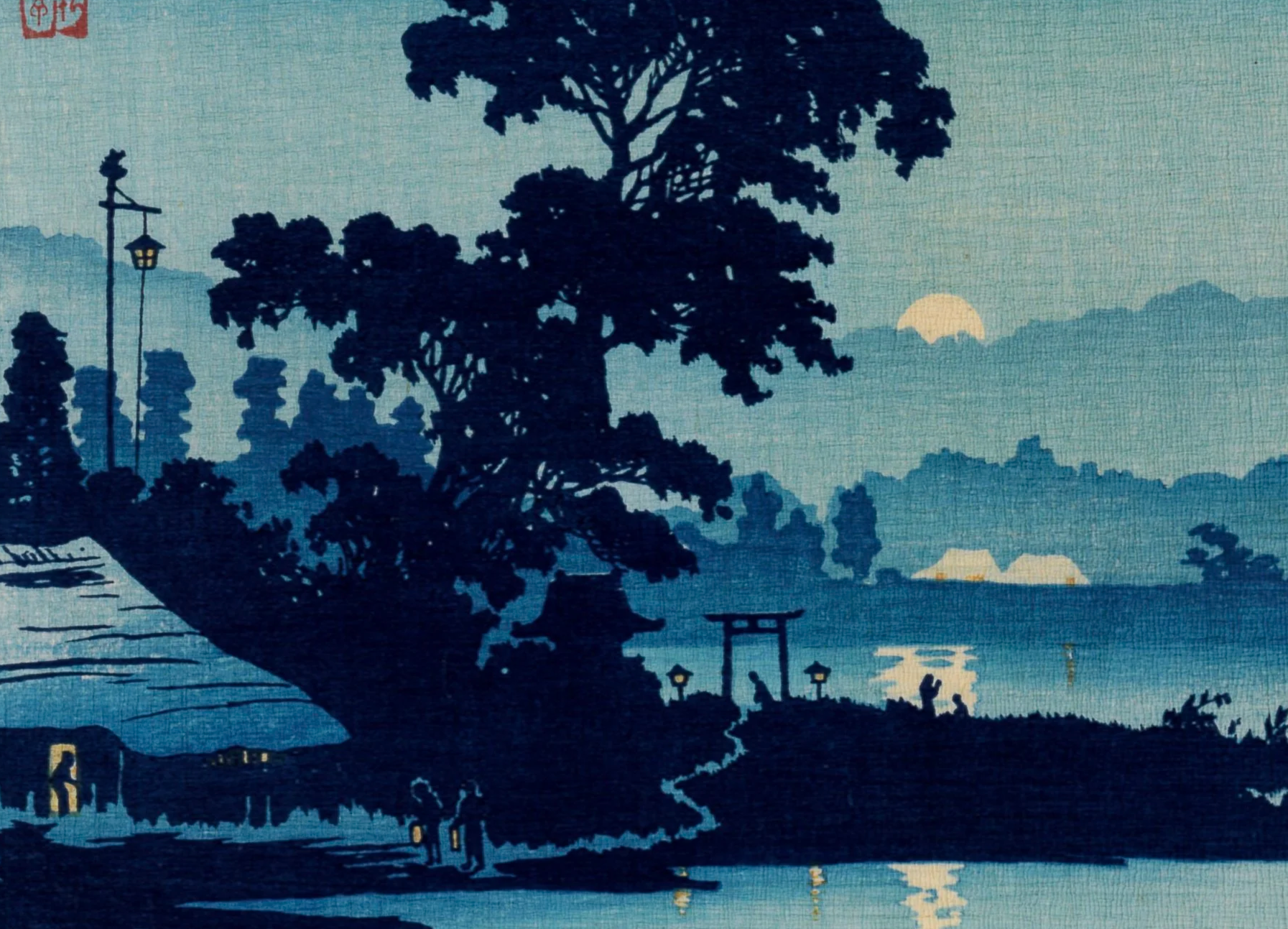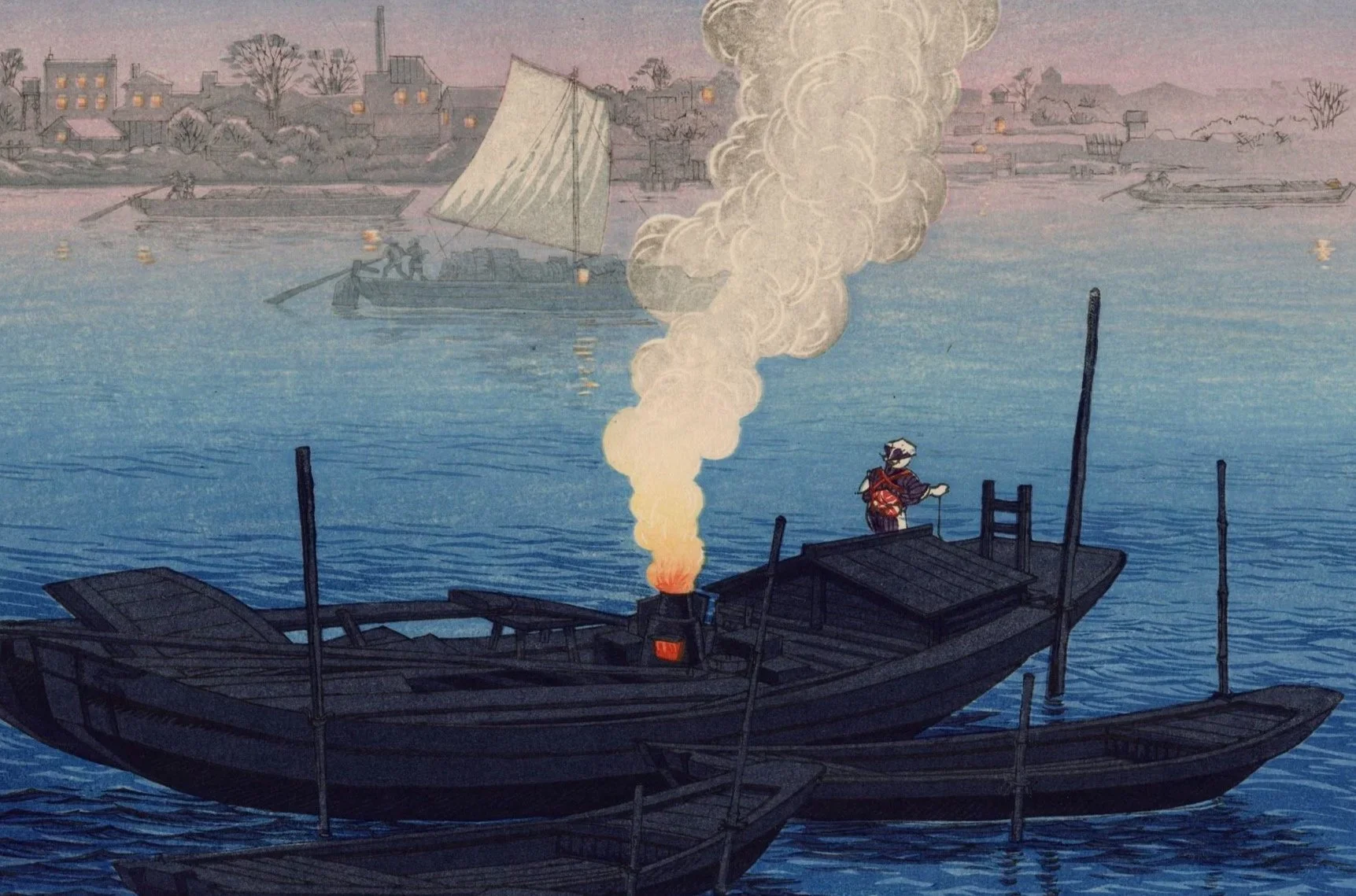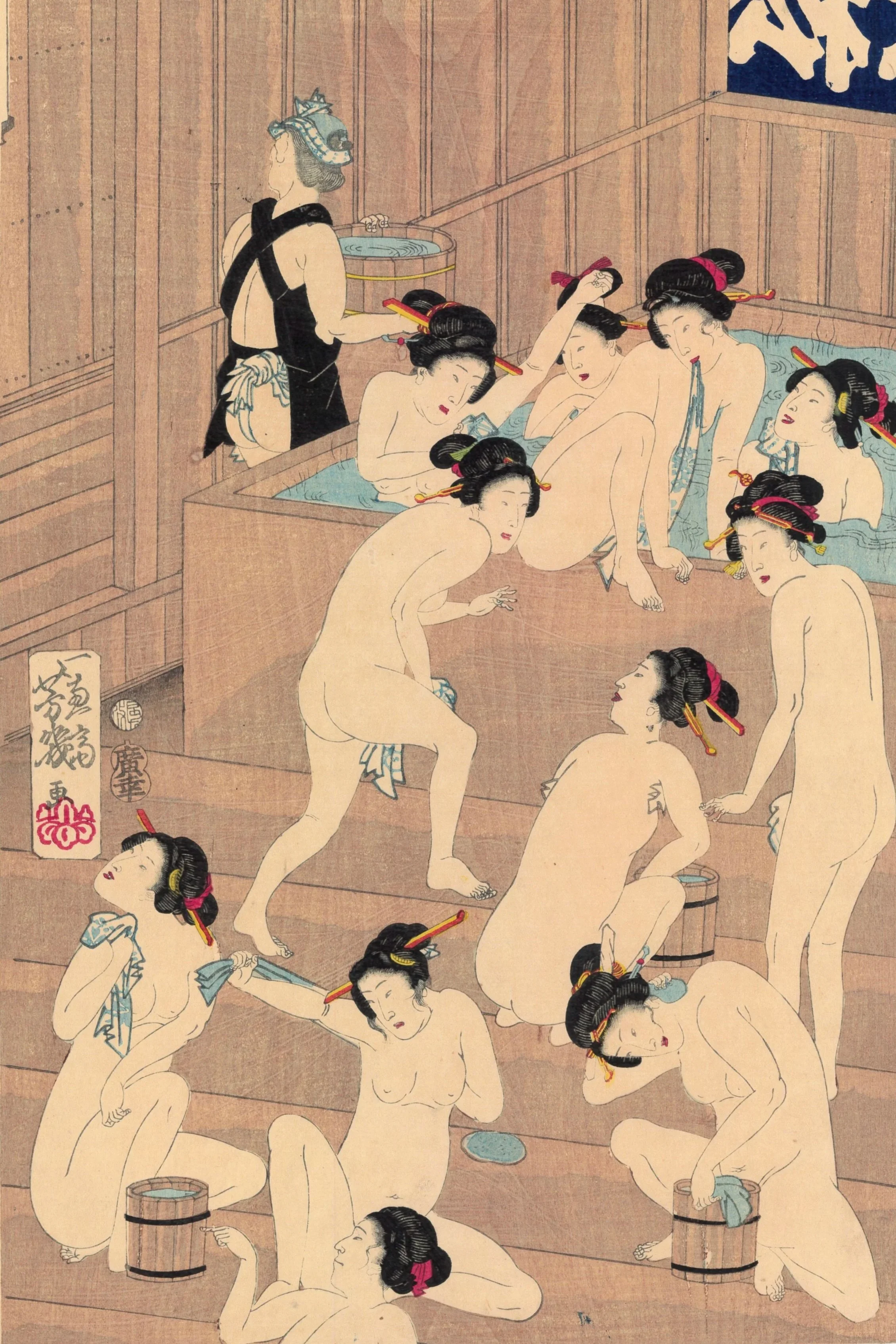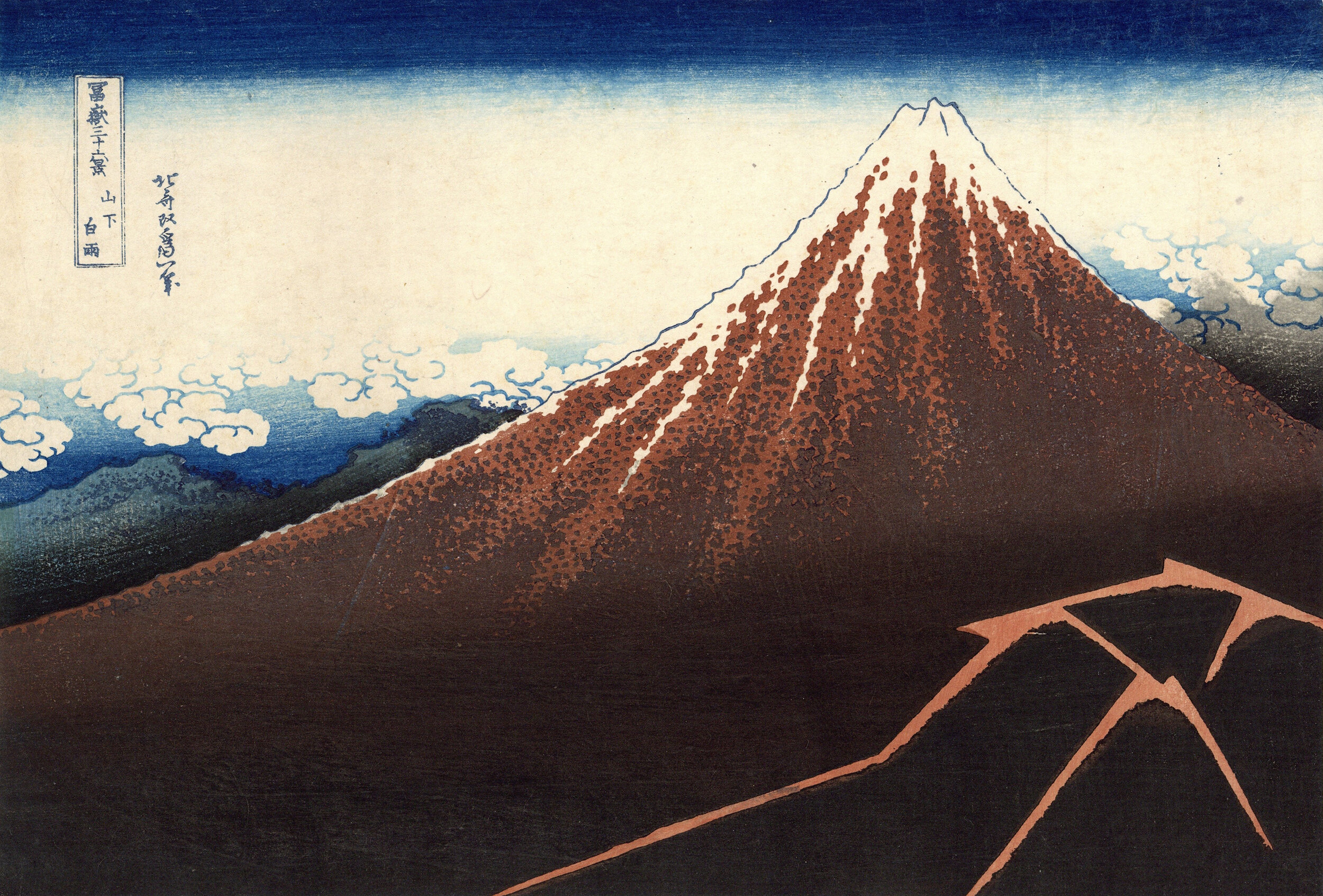
Art of Ukiyoe
Fine Japanese Prints
Masterpieces and rarities, from early Ukiyoe to Shin Hanga, all guaranteed original.
Our Newest
Ochiai Yoshiiku (1833-1904)
Long waited beautiful bath, Annual customs of the present day
Featured Print:
Bath Time, Ukiyo-e Style
Naked ladies! Naked ladies everywhere!
The bathhouse print was something of a sub-genre in Ukiyo-e, linking traditional woodblock print designs with shunga, or erotic prints. It allowed artists to display the female form – often in many poses – without being explicitly sexual, which could get the artists and publishers in trouble. (Shunga, for example, which were produced by most of the great names in Ukiyo-e, including Utamaro and Hokusai, were often unsigned.)
But of course, when we fill a design with many naked women, it can’t help but be a little sexy, or at least hint at eroticism.
For my new featured print, I’m taking a look at this wonderful and raucous bathhouse triptych by Ochiai Yoshiiku (1833-1904). Here we see 16 naked women, one topless woman, seven elaborately clothed women, three children and three men -- likely the proprietor and attendants -- all cavorting in a sento, or the neighborhood baths that were shared by both sexes in Edo times.
The traditions of the sento remain in place today, although they are no longer mixed (that ended with the arrival of Westerners in the 1850s and 1860s). One washes oneself thoroughly, as all the women in the foreground are doing, before slipping into the scalding water of the tub, as the women in the upper right hand of the right-hand sheet have done.
Then one soaks in the steamy, blissful water, catching up on local news with bath mates, and perhaps sharing gossip.
An early such design came from Torii Kiyonaga, who’s 1787 “Interior of a bathhouse” gave us a view of eight women in various states of undress preparing for or enjoying their baths. Later, Toyohara Kunichika would also provide his take on the crowded bathhouse scene, often with a healthy dose of comedy, such a nude woman pratfalling or two naked women getting into a hair-pulling catfight as the male attendants struggle to resolve the fracas.
-
The use of multi-sheet designs allows for the maximum number of unclothed female bodies. But they are never entirely unclothed, unlike shunga. Look closely (if you haven’t already). The artists creatively used a variety of angles, tenugui, limbs, oke wooden bath buckets and architectural elements to protect at least a little of the women’s modesty.
Fun times.
Sharon
Please mail, phone, Wechat or WhatsApp me. I'm happy to answer any questions. I’m also happy to send additional photographs.
This is only a limited selection of our prints.
To see more, please contact me.
如果您有兴趣购买版画,请通过邮件、电话、微信或WhatsApp与我联系,我将非常乐意回答任何相关品相问题。
本网站仅展示我部分藏品,如想欣赏更多画作,请与我联系。
How to Purchase
Learn more about payment and shipping, please click Here

